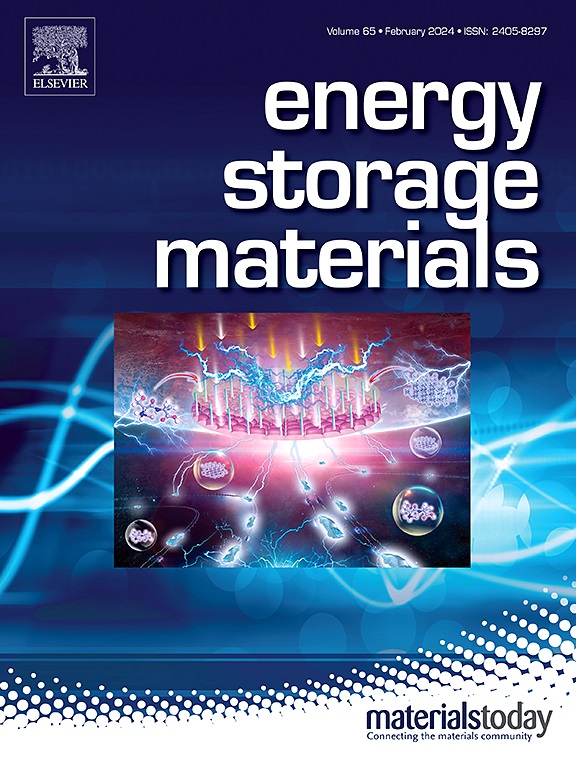Insights into the Functional Role of Copper Donors on Phase Transition and NaF-Rich SEI for Fast and Durable Sodium-ion Storage
IF 18.9
1区 材料科学
Q1 CHEMISTRY, PHYSICAL
引用次数: 0
Abstract
The attractive MoSe2 anodes face the problems of low conductivity and Se loss. Introducing electron donor has proven effective in enhancing metallic 1T content for improved performance. However, it remains difficult to mitigate the degradation of 1T phase and the loss of active materials, which continues to hinder the cycling stability. Guided by research experience and DFT results, low-valence Cu+ atoms were selected as both electron donors and vacancy creators in this work to synergistically address these two challenges. The donated electrons from Cu+ to Mo atoms facilitate the phase transition from semi-conducting 2H to metallic 1T in MoSe2 for accelerated reaction kinetics with a high capacity of 257.0 mAh g-1 at 50 A g-1. Meanwhile, the low-valence atoms assisted the formation of accompanying vacancies. The exposed the Cu+ donor enhanced the PF6− adsorption and also catalyze the formation of NaF-rich SEI layer. This effectively mitigated the loss of activity materials and the volume expansion issues, resulting in a high capacity of 364.6 mAh g-1 (∼124.6% of its original capacity) after 18,000 cycles at 10 A g⁻¹. The insight gained from the doping of low-valence metal atoms offer a promising pathway for the SEI-modulating strategy and also the future development of other type electrode materials.

铜供体在快速和持久钠离子存储中的相变和富naf SEI中的功能作用
具有吸引力的MoSe2阳极面临着低电导率和硒损耗的问题。事实证明,引入电子给体可以有效地提高金属1T含量,从而提高性能。然而,很难减轻1T相的降解和活性物质的损失,这继续阻碍循环稳定性。在研究经验和DFT结果的指导下,本研究选择了低价Cu+原子作为电子供体和空位创造者,以协同解决这两个挑战。Cu+原子向Mo原子提供的电子促进了MoSe2中从半导体2H到金属1T的相变,加速了反应动力学,在50 a g-1下具有257.0 mAh g-1的高容量。同时,低价原子辅助空位的形成。Cu+给体的暴露增强了PF6−的吸附,并催化了富naf SEI层的形成。这有效地减轻了活性材料的损失和体积膨胀问题,在10 a g⁻¹下循环18000次后,产生了364.6 mAh g-1的高容量(约为原始容量的124.6%)。从低价金属原子掺杂中获得的见解为sei调制策略和其他类型电极材料的未来发展提供了有希望的途径。
本文章由计算机程序翻译,如有差异,请以英文原文为准。
求助全文
约1分钟内获得全文
求助全文
来源期刊

Energy Storage Materials
Materials Science-General Materials Science
CiteScore
33.00
自引率
5.90%
发文量
652
审稿时长
27 days
期刊介绍:
Energy Storage Materials is a global interdisciplinary journal dedicated to sharing scientific and technological advancements in materials and devices for advanced energy storage and related energy conversion, such as in metal-O2 batteries. The journal features comprehensive research articles, including full papers and short communications, as well as authoritative feature articles and reviews by leading experts in the field.
Energy Storage Materials covers a wide range of topics, including the synthesis, fabrication, structure, properties, performance, and technological applications of energy storage materials. Additionally, the journal explores strategies, policies, and developments in the field of energy storage materials and devices for sustainable energy.
Published papers are selected based on their scientific and technological significance, their ability to provide valuable new knowledge, and their relevance to the international research community.
 求助内容:
求助内容: 应助结果提醒方式:
应助结果提醒方式:


